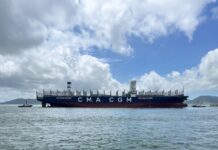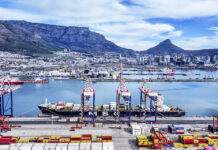
Kawasaki Kisen Kaisha, Ltd. (K Line) and Maritime and Port Authority of Singapore (MPA) are the new members of the consortium, consisting of A.P. Moller – Maersk A/S, Fleet Management Limited, Keppel Offshore & Marine, Maersk Mc-Kinney Moller Center for Zero Carbon Shipping, Sumitomo Corporation and the American Bureau of Shipping (“ABS”), which aims to the acceleration of the use of ammonia in Singapore.
The consortium also announced the receipt of Approval in Principle (AiP) from ABS for the design of an ammonia bunkering tank.
“Close collaboration between public and private sector is crucial in order to decarbonise the maritime industry by 2050. Safe handling of ammonia in ports and onboard vessels is a perfect example of an area that requires effective collaboration between multiple parties as operational, safety, environmental and regulatory issues must be solved in parallel. With MPA onboard we have optimal conditions for a large-scale demonstration to support the development guidelines, safety frameworks and standards for the ammonia fuel pathway,” commented Bo Cerup-Simonsen, CEO of Mærsk Mc-Kinney Møller Center for Zero Carbon.
During the Singapore Maritime Week on 6 April, a Memorandum of Understanding (MoU) was signed by the consortium, K Line and MPA, with the aim of developing an ammonia supply ecosystem in the port of Singapore, which is the largest fuel refueling port in the world.
This action is a follow-up to a feasibility study launched jointly by the consortium in March 2021 to develop an ammonia bunker supply chain in Singapore.
Last year, the consortium found potential sources of ammonia supply and indicative costs, while undertaking the preliminary design and cost estimation for critical infrastructure, such as ammonia storage tanks and bunkering vessels, which led to the AiP from ABS to design the bunker vessel.

With the new members, the parties will build on the current findings and begin development works to create an integrated supply chain, which aims to start ammonia supply by 2030, according to a statement.
The consortium said it will continue to work with various stakeholders in the shipping industry and relevant Singaporean ministries and agencies to implement the world’s first ammonia supply chain.
This is in line with the International Maritime Organization’s initial strategy to halve greenhouse gas (GHG) emissions in the shipping industry by 2050 compared to 2008 levels.
Ammonia, which does not emit CO2 when it burns, seems that it will play a leading role as a fuel for this purpose.
Georgios Plevrakis, ABS vice president of global sustainability, pointed out that ammonia is a fuel “with significant potential as a solution for shipping companies looking to decarbonise their operations.”





